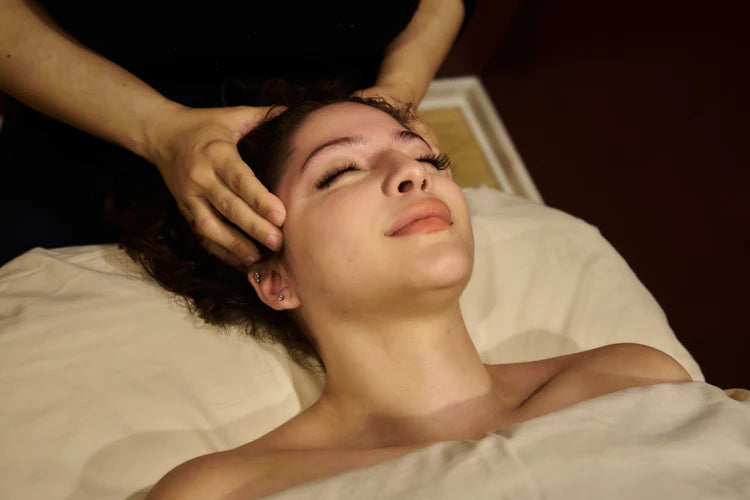We rely on technology more than ever before as we spend time looking down at our phone or tablets or leaning forward to see our computer screen. Screen time has become an important way to work, get information, watch entertainment, and more, and it’s here to stay. Unfortunately, “tech neck” also comes along with screen time. This term refers to the pain and even injuries that can occur from hunching and leaning forward for hours day after day as we look at our screens.

How our posture creates the problem
What exactly happens when you lean forward or bend your head down repeatedly for long periods of time? Your head weighs about 10 to 12 pounds, and for every inch it moves away from being balanced on top of your neck and shoulders, it essentially doubles in weight. Your muscles, tendons, and ligaments have to work harder to support this added weight, and this leads to overstretching, fatigue, and soreness.
Symptoms of tech neck
Tech neck can cause the following symptoms:
- Pain at the junction of your neck and shoulders
- Chronic tension muscle headaches with tender muscles in the neck, scalp, and shoulder
- Muscle spasms in your neck
- Upper back pain
- Increased curvature of the spine
- Dull or sharp, stabbing pain
- Tingling and numbness in your arms and hands
- Increased pain when you’re tilting your head forward or looking down
Muscles and nerves that play a role
The following muscles and nerves are adversely affected when you hunch or lean forward:
- Shoulder blade retractors – These are the middle trapezius and rhomboid muscles in your upper back. They cause a hunchback posture when they collapse, which worsens symptoms.
- Occipital neuralgia – These nerves extend from the spine to the base of the neck, up the back of the neck, through muscles and then to the skull. They bear additional pressure when your neck muscles become tense.
How massage can help
Massage can have a positive impact on the symptoms of tech neck. Some muscles become overworked as you look at screens, while others don’t fire at all. Muscles can atrophy when you bend or hunch forward to look at a screen, and massage can help bring them back.
As soft tissue is manipulated, blood and lymph circulation improves and allows more oxygen and nutrients to reach your muscle cells. This improves tissue function and reduces swelling along with pain.
Massage also relaxes muscles, tendons, and ligaments, which keeps them from compressing nerves around them. Nerve compression, or pinching, causes pain, so preventing this helps relieve symptoms.
In addition to massage, massage therapists can utilize kinesiology tape to help minimize the sensations of pain while providing corrective feedback for movement and posture. Applying two vertical strips of kinesiology tape on the upper torso of the back can provide feedback and correction that remind you to improve your posture.
They can also help you properly use breath work to help the body open back up from its position of a forward head and collapsed upper torso.
Although tech neck is an ongoing problem that doesn’t look like it’s going anywhere, massage therapy can help alleviate its symptoms. Without it, symptoms are likely to worsen over time.






